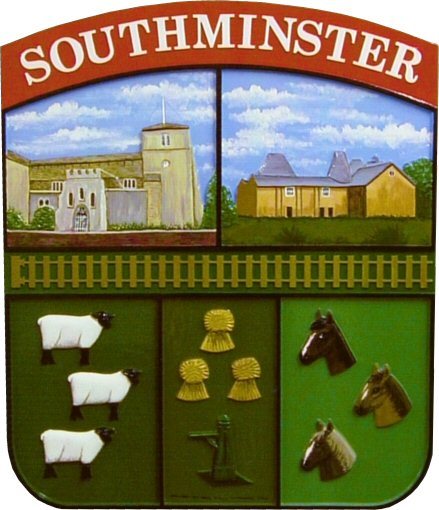Southminster sits in the population gap between large village and small town. Until the turn of the 19th Century it was the largest settlement in the Dengie Peninsula. The “minster” part of its name suggests either a monastic foundation or the mother church of an area.
Southminster had a market in the late 13th Century (and protected it against rivals through the courts). Southminster in the late 19th Century had a fairly full complement of shops, smiths, wheelwrights, millers and other trades. Its market-cum-horse fair attracted custom from as far away as London. During Jacobean times Thomas Sutton, founder of the Charterhouse Hospital, bought the village, its tithes and rents and with them, the right to appoint the Vicar. That right is still exercised. In 1832 Charterhouse provided the parish pump, the village’s first reliable public water supply. This improved public health enormously.
Southminster’s main income came from farming, market gardening and the market and shops until the mid twentieth century, when Bradwell Power Station was built. Relatively cheap housing led to increased inward migration. This trend accelerated when the railway was electrified. The improved rail link permitted large-scale commuting to Wickford and places along the London-Southend main line. The population has nearly doubled during the last forty years to a little over 4,100 at the last census.
The main most recent housing developments lie in the North-East (built during the 1950s), a chain of 1960s housing west from the centre, and new developments on the southern edge of the village built at the turn of the 21st Century.
Southminster is no longer the major trading centre of yesteryear. Commuting has increased. Competition from supermarkets in Burnham, Maldon, South Woodham and Chelmsford has reduced the shopping centre. However, Southminster’s shopping centre is still the second biggest in the Dengie Hundred outside Maldon. There are around thirty retail and service outlets in the village. In fact, it is possible to get most daily needs without leaving the village.
There are several small manufacturing businesses on two small industrial estates. Most companies employ fewer than ten workers. The workforce is essentially local and 65% of Southminster’s workforce travels less than 2 kilometres to work. Private cars are the principal method of transport.
The school was founded in 1814 by the then Vicar, Rev’d Dr. Alexander Scott. It is now a Church of England Voluntary Controlled Primary School with improving standards on an excellent site. It has an indoor swimming pool open to the public at certain hours. For younger children there is a day nursery and a pre-school. Provision for those at the other end of their life includes an over-sixties club, a regular Lunch Club and a Day Centre on the edge of the village that provides a wide range of services for the elderly.
Despite some complaints, Southminster has a vibrant community life. The Churches (Anglican and URC) are geographically at the centre of the village and attempt to serve the centre of village life. Also in the centre is a Public Hall, built to in memory of those that died in the First World War and regularly used by societies and individuals. There are strong societies such as the Women’s Institute, a Choral and Operatic Society, a Horticultural Society that annually produces a large Show, and a number of sporting organisations. These include a very successful football club and thriving tennis and bowls clubs. All three sports are based at the King George V ground, which recently won an award for one of the best park football pitches in England.
Modern day Southminster builds on the foundation of the history and former glory of the past and looks optimistically to the future. Most importantly an informed visitor has observed, “Southminster does community very well”.
Councillor Ken Dunstan
